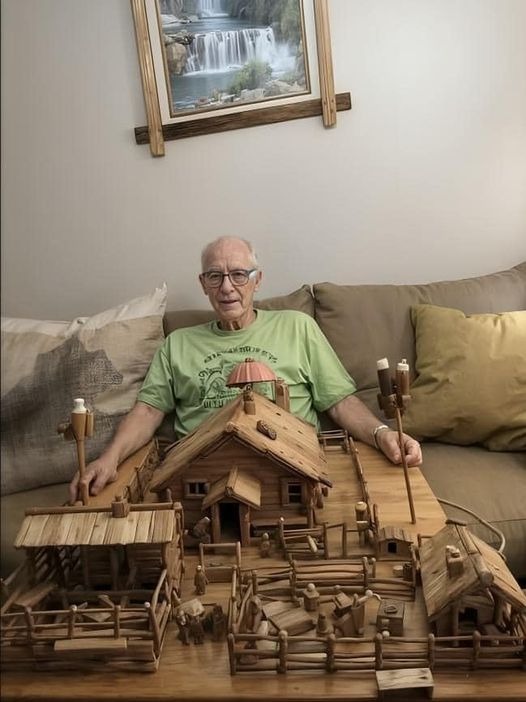Home Interior Design Tips for the Modern Elderly
As we step into the golden years of life, creating a home that matches our personalities while accommodating our changing needs becomes essential. With a few thoughtful updates, you can turn your living space into a comfortable, stylish, and functional haven. Here are some interior design tips tailored specifically for the modern elderly, aiming to combine comfort, safety, and style.

Embrace Functionality and Safety
Safety is one of the top priorities when it comes to home design for older adults. Simple additions can make a world of difference. Consider installing handrails and grab bars in areas where slips and falls are common, like bathrooms and staircases. Non-slip mats in these areas are also a smart choice to enhance safety. It’s helpful to choose furniture with rounded edges, minimizing the risk of injury from sharp corners.
Lighting is another key factor. Ensure that your home is well-lit, with easy-to-reach light switches in every room. Nightlights in hallways and bathrooms are essential to help you navigate safely in the dark. You may also want to consider installing motion-sensor lights in key areas; these will turn on automatically as you move, saving you from fumbling in the dark.
Create an Open and Spacious Feel
As we grow older, maintaining mobility and reducing obstacles in our living spaces becomes essential. Creating an open and spacious environment helps prevent accidents and allows for easy movement. Start by removing unnecessary furniture or clutter that may obstruct pathways. This not only makes it easier to navigate but also gives your home a clean, airy feel.
Use light, neutral colors on walls and ceilings to create an expansive, open feel. Soft shades like cream, beige, and light gray can brighten a room and make it feel larger. For added comfort, ensure that pathways, especially in high-traffic areas, are wide enough to accommodate mobility aids like walkers or wheelchairs, if necessary.
Incorporate Comfortable and Supportive Furniture
Comfort is a top priority in designing any living space, but it’s especially important for older adults. Choose furniture that is both visually appealing and highly supportive. Look for chairs and sofas with ergonomic designs, adequate back support, and armrests that make it easier to get in and out of seats. High-quality cushions and pillows can add an extra layer of comfort, transforming your favorite chair into a cozy retreat.
Opt for furniture made from durable, easy-to-clean materials, which are great for everyday use. Leather or performance fabric options are both stylish and practical, as they’re built to withstand wear and tear and can be cleaned easily. Another consideration is adjustable seating; recliners or motorized lift chairs provide support and flexibility, making relaxation easy and safe.
Blend Style with Functionality
There’s no need to sacrifice style for functionality. Your home should reflect your personal tastes and interests, making it a space that’s both functional and inspiring. Incorporate decor that resonates with you, whether it’s a collection of family photos, cherished artwork, or souvenirs from your travels. Potted plants can add a touch of nature and vibrancy to any room, while also providing a sense of calm.
Consider multi-functional furniture pieces, like ottomans that can double as storage space or adjustable shelving to display keepsakes. Functional decor, like a beautiful lamp or a sturdy, stylish table, lets you enjoy an aesthetically pleasing home without compromising on practicality. By thoughtfully blending style and function, you can make each room feel unique and welcoming.
Embrace Technology for Convenience
Modern technology has made incredible advancements in improving daily life, especially for the elderly. Smart home devices are now easier to use than ever and can add convenience, comfort, and even safety. Consider investing in voice-activated assistants, like Amazon Alexa or Google Home, to control lights, play music, or even make phone calls. Smart thermostats and lighting systems allow you to adjust settings without getting up, which can be especially handy on colder days or if you’re feeling tired.
Other helpful gadgets include video doorbells, which let you see who’s at the door without opening it, and automatic lighting that can be controlled remotely or through voice commands. These technologies add an extra layer of independence and comfort, making day-to-day tasks simpler.
Final Thoughts
Creating a home that meets the needs of the modern elderly doesn’t have to be overwhelming. By prioritizing safety, functionality, and personal style, you can design a living space that feels both secure and welcoming. Your home should reflect who you are, so choose colors, furniture, and decor that make you happy and comfortable.
Remember, each room can serve as a source of joy and ease if designed thoughtfully. Your golden years are a time to enjoy the spaces you’ve created, making every day at home a little brighter. With a few small adjustments, you’ll have a home that not only supports your lifestyle but also brings you contentment and pride every time you walk through the door.
Creating a safe, stylish, and functional home is a wonderful way to celebrate this phase of life. Share these ideas with friends and family, and together, let’s build spaces that enhance our lives, honor our needs, and embrace the beauty of home.





